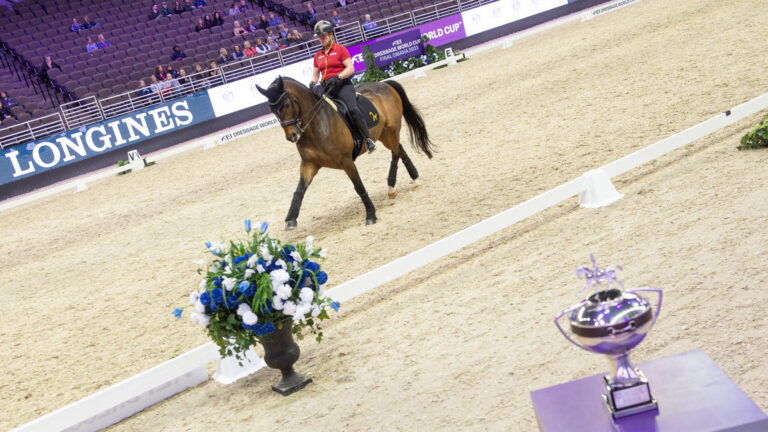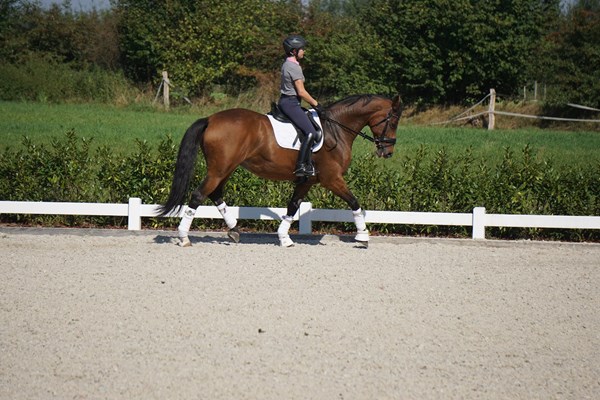
In my last blog, I talked about trying to find a better description to my scribe when the initial turn at C resembles something other than, well, a turn. I had just judged a schooling show where maybe 80 percent of the riders had drifted away from the direction of the turn, and thus a 10-meter loop looked more like a 13-meter over-ripe banana. These were riders of varying ability, from very experienced to newbies.
Very few of these riders had any trouble with the corresponding last turn of the test onto the centerline, although a few did drift past A there as well.
My usual comment is “Wide at C,” which is terse and thus friendly for the scribe. But, I was finding that some riders didn’t understand that phrase the way it was meant. So, last week, faced with a day of event tests, I decided to play a game with myself and change up my wording every time I saw a wide turn at C. Then I had a new problem – almost none of the riders drifted away from the turn. What was different, I wondered? Why would a group of straight dressage riders lose control of the turn, while a group of event riders – again, of varying abilities – could march right through that turn with precision?
To start, there were two obvious differences in the conditions. First, the dressage tests were in the large, 60-meter arena, while the event tests were in the smaller 40-meter arena. On the face of it, that should have made things easier for the dressage riders, not the event riders. The biggest difference, however, was that the dressage riders all had a halt at X, while the event riders got a head of steam going before A and carried it down the centerline with no halt at X.
Maybe the halt is the problem then or, rather, a lack of enthusiasm in the move off. The dressage riders thus don’t always have the same impulsion to keep their balance through that turn the way they do later in the test after the canter, with the last turn at A. With no halt at X, the event riders don’t have that issue.
Since I see that drifting at C so often, I wonder if the riders don’t know how bad it actually looks to the judge, as if they simply don’t have control of which way their horse’s shoulders are pointing. Or, I wonder, maybe they think they need more space for the turn than just 10 meters. I can still recall years ago hearing a famous trainer shouting to her students at a clinic for test-riding accuracy: “Why are you going right before you go left?” They simply didn’t realize that they were doing it.
Or, maybe riders don’t notice the problem because it really doesn’t make a big hit in the score, except at the Intro Level where that turn is a separate box. In most tests, the turn at C is combined with a more major question, such as a 20-meter circle, in the same box. At worst there, it’s usually a modifier, maybe a deduction of a half point. However, it really can look pretty awful and doesn’t make a good first impression.
I often see a “deer in the headlights” instant with riders just before that turn. They are looking at me (the judge) straight in the eyes, while their horse is anything but straight. I find there is sort of a magic moment where the rider’s eyes should shift toward the turn, with her inside shoulder back, even as she still is pointing her horse toward C. The riders who don’t fight the turn, but who plan for it soon after the move off, are a bit ahead of the game there.











